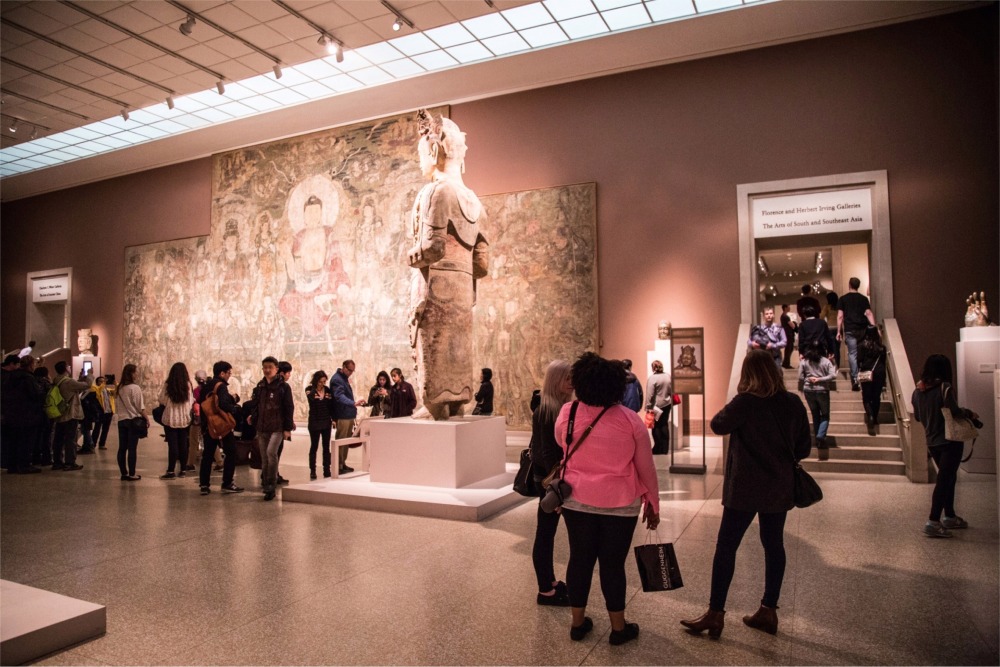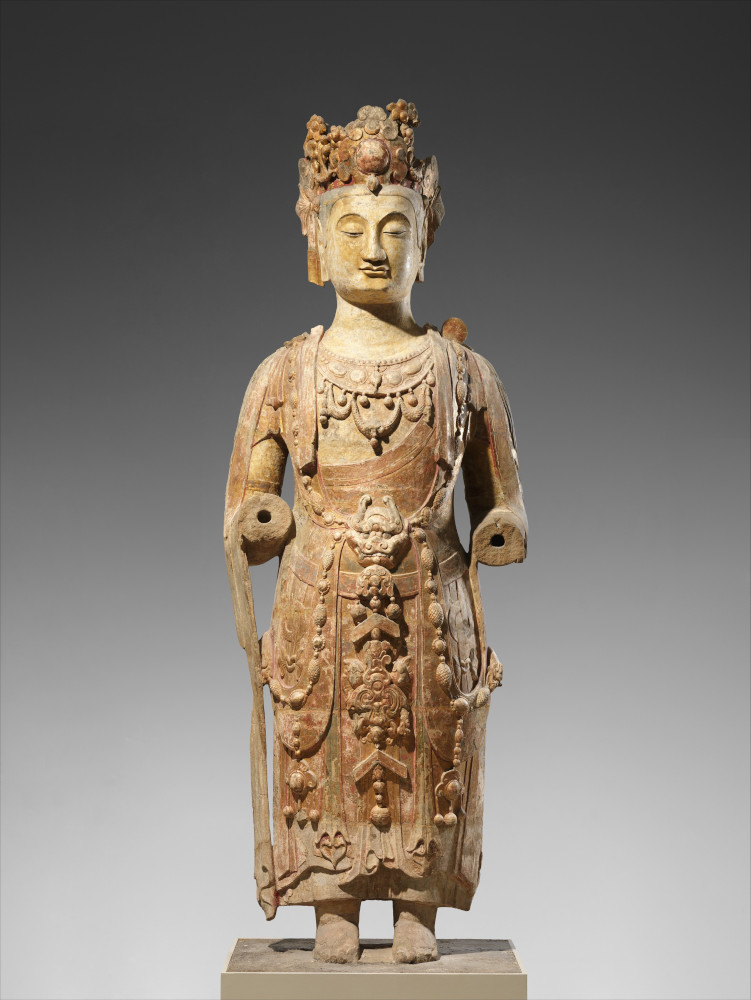Bodhisattva Statue
Home > New York State Photographs > Metropolitan Museum of Art > Bodhisattva Statue


These photographs show a statue of Bodhisattva, probably Avalokiteshvara (Guanyin) ca. 550–560 in the Asian Wing at the Metropolitan Museum of Art in New York City.
Bodhisattvas
In Buddhism, a bodhisattva or bodhisatva is a person who is on the path towards bodhi ('awakening') or Buddhahood.
In the Early Buddhist schools as well as modern Theravada Buddhism, a bodhisattva (Pali: bodhisatta) refers to someone who has made a resolution to become a Buddha and has also received a confirmation or prediction from a living Buddha that this will be so.
In Mahayana Buddhism, a bodhisattva refers to anyone who has generated bodhicitta, a spontaneous wish, and a compassionate mind to attain Buddhahood for the benefit of all sentient beings. Mahayana bodhisattvas are spiritually heroic persons that work to attain awakening and are driven by great compassion (mahakaruṇā). These beings are exemplified by important spiritual qualities such as the "four divine abodes" (brahmaviharas) of loving-kindness (metta), compassion (karuṇā), empathetic joy (mudita), and equanimity (upekkha) as well as the various bodhisattva "perfections" (pāramitās) which include prajñāpāramitā ("transcendent knowledge" or "perfection of wisdom") and skillful means (upaya).
In Theravada Buddhism, the bodhisattva is mainly seen as an exceptional and rare individual. Only a few select individuals are ultimately able to become bodhisattvas (such as Maitreya). Mahayana Buddhism generally understands the bodhisattva path as being open to everyone and Mahayanists encourage all individuals to become bodhisattvas. Spiritually advanced bodhisattvas such as Avalokiteshvara, Maitreya, and Manjushri are also widely venerated across the Mahayana Buddhist world and are believed to possess great magical power which they employ to help all living beings.
Asian art
The Met's Asian department holds a collection of Asian art, of more than 35,000 pieces, which is arguably the most comprehensive in the US. The collection dates back almost to the founding of the museum: many of the philanthropists who made the earliest gifts to the museum included Asian art in their collections. Today, an entire wing of the museum is dedicated to the Asian collection which spans 4,000 years of Asian art. Every known Asian civilization is represented in the Met's Asian department, and the pieces on display include every type of decorative art, from painting and printmaking to sculpture and metalworking. The department is well known for its comprehensive collection of Chinese calligraphy and painting, as well as for its Indian sculptures, Nepalese and Tibetan works, and the arts of Burma (Myanmar), Cambodia, and Thailand. Three ancient religions of India—Hinduism, Buddhism, and Jainism—are well represented in these sculptures. However, not only "art" and ritual objects are represented in the collection; many of the best-known pieces are functional objects. The Asian wing also contains a complete Ming Dynasty-style garden court, modeled on a courtyard in the Master of the Nets Garden in Suzhou. Maxwell K. Hearn has been the current department chairman of Asian Art since 2011.
The Metropolitan Museum of Art of New York
The Metropolitan Museum of Art in New York City, colloquially "the Met", is the largest art museum in the Americas. Its permanent collection contains over two million works, divided among 17 curatorial departments. The main building at 1000 Fifth Avenue, along the Museum Mile on the eastern edge of Central Park on Manhattan's Upper East Side, is by area one of the world's largest art museums. A much smaller second location, The Cloisters at Fort Tryon Park in Upper Manhattan, contains an extensive collection of art, architecture, and artifacts from medieval Europe.
The Metropolitan Museum of Art was founded in 1870 with its mission to bring art and art education to the American people. The museum's permanent collection consists of works of art from classical antiquity and ancient Egypt, paintings, and sculptures from nearly all the European masters, and an extensive collection of American and modern art. The Met maintains extensive holdings of African, Asian, Oceanian, Byzantine, and Islamic art. The museum is home to encyclopedic collections of musical instruments, costumes, and accessories, as well as antique weapons and armor from around the world. Several notable interiors, ranging from 1st-century Rome through modern American design, are installed in its galleries.
The Fifth Avenue building opened on March 30, 1880. In 2021, despite the COVID-19 pandemic in New York City, the museum attracted 1,958,000 visitors, ranking fourth on the list of most-visited art museums in the world.
From Wikipedia, the free encyclopedia.


